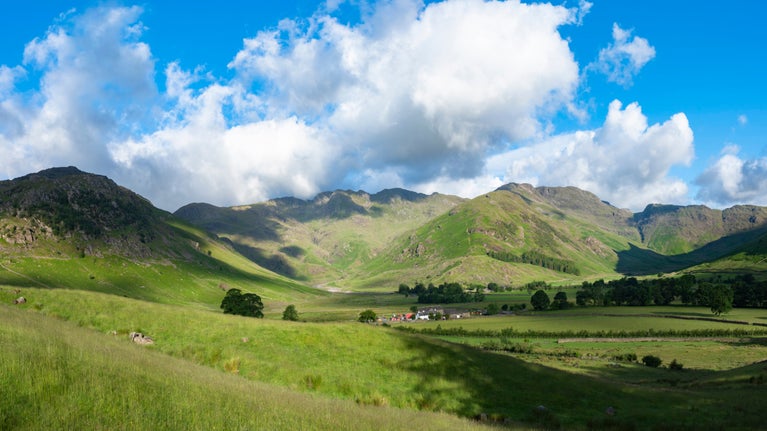
Nature conservation
From ancient trees to bees and butterflies, our places are full of life. We're working hard to safeguard nature for years to come.

We care for the nation’s largest collection of historically important and beautiful gardens, which span over five centuries of garden history and design. Continuing the work of the many gardeners that came before us who propagated cuttings, collected seed and maintained their plant collections, we're making sure they are available for future generations to admire and enjoy.
Plants include original introductions from the wild, botanical rarities and plants named after the gardens themselves. Together they make up one of the most diverse and significant collections of cultivated plants anywhere.
The combination of Britain’s temperate climate, maritime history and our love of gardening has left a legacy of plant discoveries, plant breeding and collecting that is still enjoyed today, reflecting passions, changing fashions and horticultural obsessions.
Threats from climate change, new pests and diseases, the destruction of native habitats and the loss of many historic varieties from trade means that conservation has become increasingly important. This often requires long-term thinking with a future view of what changes might occur, and which plants might need replacing, in many years to come.
Daffodils have been associated with the Tamar Valley for centuries. Local people worked their small plots growing daffodils for the cut flower market, which were sent up to London by train. Trading boomed until the Second World War when flowers were replaced by food crops. Fields of daffodil bulbs with old varieties and small delicate beauties were discarded, and some lost to cultivation.
Since the 1970s, the local community and garden team have worked hard to reclaim bulbs abandoned in hedgerows and fields, repopulating them throughout the garden where they thrive once more.

Plants can go in and out of fashion in much the same way as clothing. A good example of this is the Ghent azalea. Imported from Belgium in the 1860s, these beautiful, scented shrubs were a Victorian garden favourite. At the height of their popularity, 200 cultivated varieties were available but by the 1930s numbers dwindled, as showy, modern hybrids became more popular.
From just two surviving shrubs, successive head gardeners have sourced and reintroduced many of these old varieties. The garden is now home to the National Collection of Ghent azaleas, which bloom in late May.
Discover more at Sheffield Park and Garden
Over 30 plants carry the name of Nymans or the Messel family who lived there: an impressive legacy of fathers and sons, Ludwig and Leonard Messel and their talented head gardener James Comber and his son Harold. The garden holds the largest collection of South American plants in England, many brought back from Harold’s plant collecting expeditions in the early 20th century. A hybrid offspring of two such plants is Eucryphia x nymansensis ‘Nymansay’, raised at the Nymans nursery in 1914/15.
The Dutch-style water garden at Westbury Court Garden is a rare survivor of a formal garden made fashionable under the reign of William III and Mary II at the end of the 17th century. Older still is another garden resident, an ancient holm oak (Quercus ilex). These evergreen oaks, native to the Eastern Mediterranean, were introduced to Britain in the late 1500s. This is probably the oldest tree of its kind in Britain, and a witness to history since at least the time of the English Civil War (1642–1651).

Sometimes described as the horticultural equivalent of the 1851 Great Exhibition, Biddulph Grange's remarkable 'world in a garden' reflects the heyday of Victorian plant hunting and exploration. While the China garden contains many Japanese plants, the highlight is most definitely Chinese.
The magnificent deciduous Chinese golden larch Pseudolarix amabilis turns brilliant yellow in autumn and is the oldest surviving example in Britain, brought back from China in the 1850s by plant collector Robert Fortune.

From ancient trees to bees and butterflies, our places are full of life. We're working hard to safeguard nature for years to come.

Ancient trees are links to our past, they're species-rich habitats that support countless other organisms. Discover what makes a tree ancient and how to recognise them.
Hedgerows and orchards provide food for insects, homes for wildlife and a spectacle of spring blossom for humans. However, they are disappearing from UK landscapes. Find out more about what we're doing to bring blossoming trees and hedgerows back.

With support from the Government’s Green Recovery Challenge Fund, we're looking for ways to protect our environment and combat climate change. Find out more about the work we're doing.
Find out how we're planting and establish 20 million trees that will absorb carbon and help tackle climate change.

Get closer to nature by reading our guides on how to spot wildlife, facts about ancient trees and tips on identifying birdsong, plus many more activities.

Discover the world of trees and plants across the 25,000 hectares of woodland, 135 landscape sites and more than 200 gardens in National Trust care.

Discover the stories behind some famous British wild flowers and how wildflower meadows support important species from butterflies to bees.

Discover what wildlife and wildflowers you can see in meadows this summer, including butterflies, grasshoppers, moths and orchids.